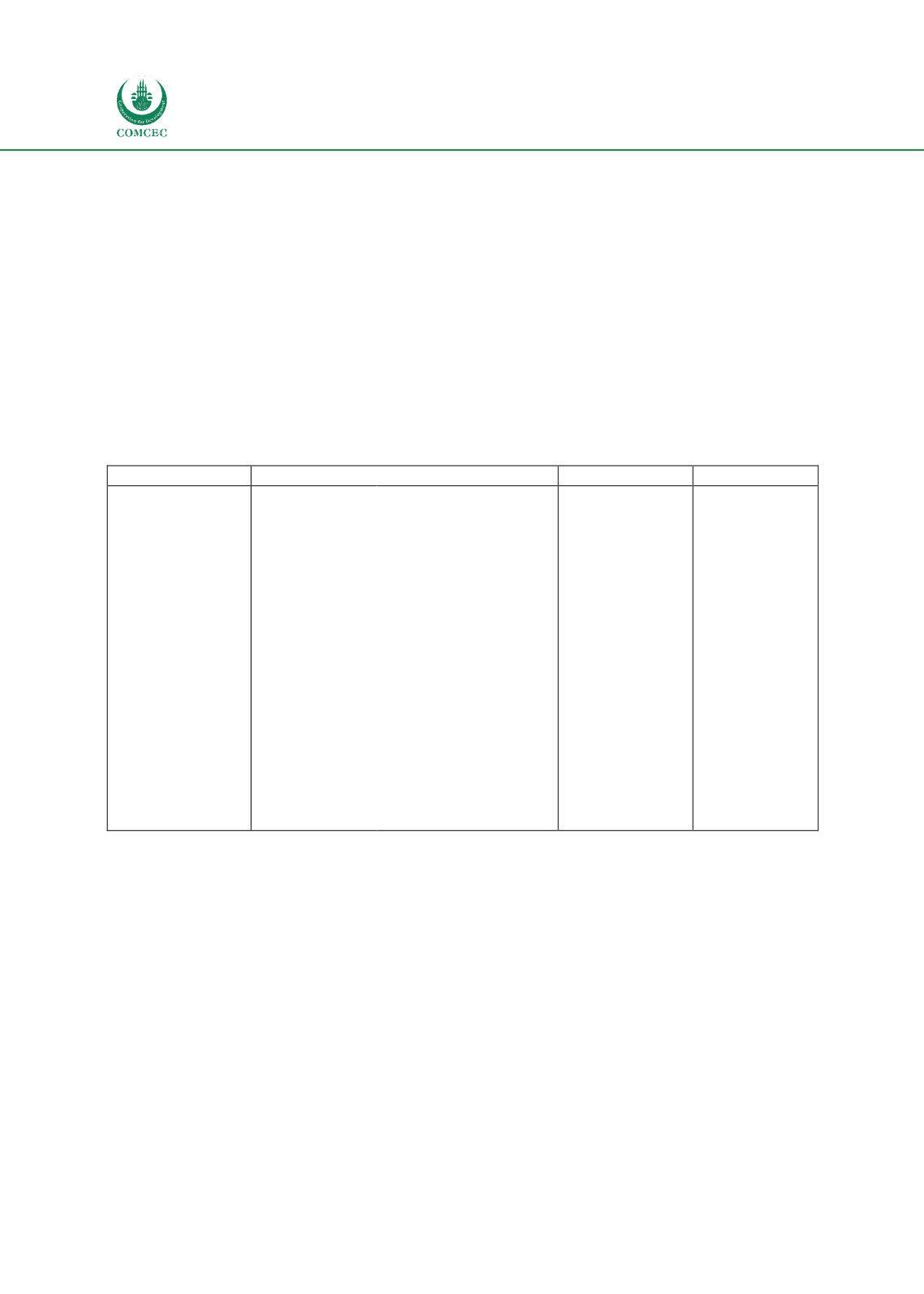

Improving Agricultural Market Performance
:
Creation and Development of Market Institutions
74
Partial Restriction – GM foods go through safety assessment, have labeling
requirements, and/or have import restrictions such as an authorization requirement,
or imports may be banned;
No Restriction – GM foods are not within a safety or assessment framework, do not
have labeling requirements or import restrictions or authorization procedures. There
are no formal limitations; and
Unknown – Information not obtained.
It should be noted that many of the countries in the “Partial Restriction” list are actually quite
open to GM foods, lacking labeling requirements and safety assessment mechanisms. They
only land in this category because they require authorization prior to importation. Still others
are quite restrictive by banning all GMO imports, but allow GMO development within the
country.
Table 1 – Regulations on GM products per OIC Member Country
Full Restriction
Partial Restriction
No Restriction
Unknown
Not applicable
Algeria
Bahrain
Bangladesh
Benin
Burkina Faso
Cameroon
Côte d’Ivoire
Djibouti
Egypt
The Gambia
Guinea
Guinea-Bissau
Guyana
Indonesia
Iran
Iraq
Jordan
Kuwait
Lebanon
Malaysia
Mali
Niger
Nigeria
Pakistan
Qatar
Saudi Arabia
Senegal
Suriname
Togo
Tunisia
Turkey
Uganda
United Arab Emirates
Uzbekistan
Yemen
Afghanistan
Albania
Azerbaijan
Brunei
Chad
The Comoros
Kazakhstan
Kyrgyzstan
Maldives
Mauritania
Morocco
Sierra Leone
Somalia
Gabon
Libya
Mozambique
Oman
Palestine
Sudan
Syria
Tajikistan
Turkmenistan
Source: Investment Consulting Associates – ICA (2017)
3.4 Challenges and Opportunities for Agricultural & Food Market Institutions
in the OIC
Before describing food and agricultural market institutions further, it is worthwhile to
examine some of the challenges that such interventions attempt to solve, and some of the
complications that can arise during the implementation of such interventions, especially when
attempting to coordinate the actions and policies of a variety of institutions.
The Iranian example of subsidy reform highlights the need for, and difficulty of, coordination
among a wide range of institutions, both public and private. Until 2011 Iran maintained an
artificially high exchange rate, which made imported food cheaper than domestically produced
commodities and served as a disincentive to domestic production. Also, although reform of
subsidies was essential, it was poorly handled, so farmers were subjected to an abrupt rise in
both fuel and fertilizer prices. This speaks to the need for widespread coordination within


















